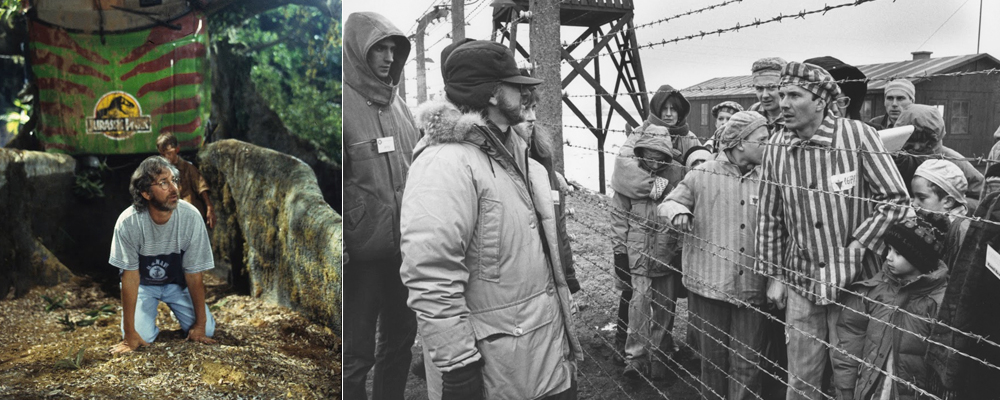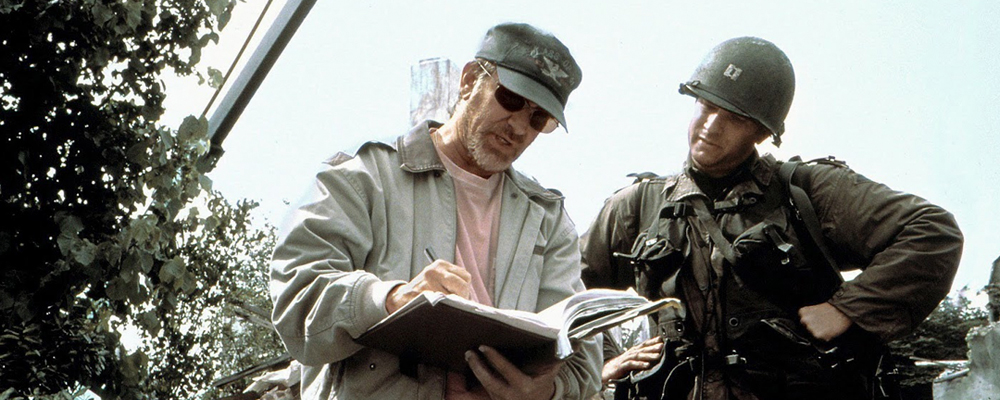HBO’s ‘Spielberg’ Documentary Is an Unabashed Love Letter to a Film Lover
Tony Sokol
Everybody loves Steven Spielberg. What’s not to love? He chased the devil off the top of the box office charts with a shark. He lent his phone to ET to call home. He put all too human faces on unimaginable atrocities. Oh, and he grinned while Roberto Benigni walked all over him at the Oscars. HBO loves the shit out of Spielberg, and for their documentary, “Spielberg,” they brought in Martin Scorsese, Brian De Palma, George Lucas, and Francis Ford Coppola, to prove it.
These directors, each of whom went on to spectacular success, form the heart of this loving look at the director who got into movies because he wanted to scare more people than just his sisters. The core of filmmakers changed the landscape of cinema as they took chances previous generations couldn’t dare, under studio restrictions. Like the British bands who congregated around London in the 60s or the artists who formed a community in the 1920s, the directors hung out with each other, ate with each other, watched each other’s films and, especially in the case of De Palma, screamed at each other when they saw a movie losing focus. Mostly they were held together by their “madness and obsession with movies,” Scorsese says. These directors set high standards for themselves and each other, pushing the work, sometimes filling in on second unit shots, like Spielberg did for a pivotal scene in De Palma’s “Scarface.” De Palma also introduced Spielberg to the actress Amy Irving. The couple lived together for four years and later married and starred in the most costly Hollywood divorce at the time.
Spielberg became a serious filmmaker after seeing a movie that set the bar too high, David Lean’s “Lawrence of Arabia.” He went to see it at full price in all its big screen, stereo glory when he was 16. Spielberg was already making movies, short World War II films on 8 mm starring his friends and incorporating stock footage and dirt bomb bullet shots, when he noticed the arc of the character Peter O’Toole played. It almost made the young filmmaker give up movies entirely, but instead he got busy, Tom Hanks explains with a lopsided grin in the documentary.
Rejected from USC film school, Spielberg jumped off a studio tour bus and hung a shingle on the door of an unoccupied office, according to Hanks’ version of a movie legend. He snuck onto Alfred Hitchcock movie sets, threw questions at everyone working at anything having to do with motion pictures and got hired as the youngest director ever on the Universal lot. Some people just hated that. Veteran entertainers from both sides of the camera were jealous of the kid who knew exactly where to set which camera upon walking on set. Not Joan Crawford, though. The actress who’d been in film since it was silent was the first star to be directed by Spielberg, on the TV series “Night Gallery,” produced by Rod Serling, another wunderkind of filmed story telling.
Director Susan Lacy begins “Spielberg” with the film that changed show business. “Jaws” took three times the shooting schedule and added millions to its budget to go on to become the best-selling motion picture of all time at that time. Lines went around the block to see the movie, and Spielberg drove around with friends gleefully giggling about how the waters were parted for him. Usually oceanic cinematography was done in lakes, or on miniaturized sets, “Jaws” was the first major motion picture to be shot on the ocean. It was huge, remembers Richard Dreyfus, but where could Spielberg go from there? The sky seems the limit.
Spielberg really started making “Close Encounters of the Third Kind” in 1964 when he shot his low-budget sci-fi flick “Firelight.” The 1977 classic was an allegory to his own broken family and he brought his youthful hope for better things under the microscope of moving cameras and a reality that he wanted to twist further than Stanley Kubrick had in “2001: A Space Odyssey.”
Spielberg had learned his trade bending his camera for episodes of “Name of the Game,” “Marcus Welby, M.D.” and “Columbo” before he let a truck bleed to death in his TV movie “Duel.” His film debut, “Sugarland Express” brought a breath of fresh air into the usual car chase movie. The documentary details his growth through “Raiders of the Lost Ark,” “E.T. the Extra-Terrestrial,” and “The Color Purple,” until he put away childish things with the film “Empire of the Sun.” This opened the doors to his Academy Award winning visions of “Schindler’s List” and “Saving Private Ryan.”
Leonardo DiCaprio, Dustin Hoffman, Liam Neeson, Ben Kingsley and countless others tell of the continually higher bar Spielberg set for himself and other directors to jump over. The director’s fans will love this movie, which fills almost two and a half hours with an inspired awe. Movie fans who find Spielberg to be a shallow commercial genius will be less awestruck.
“Spielberg” premieres on HBO on Oct. 7 at 8 p.m.





